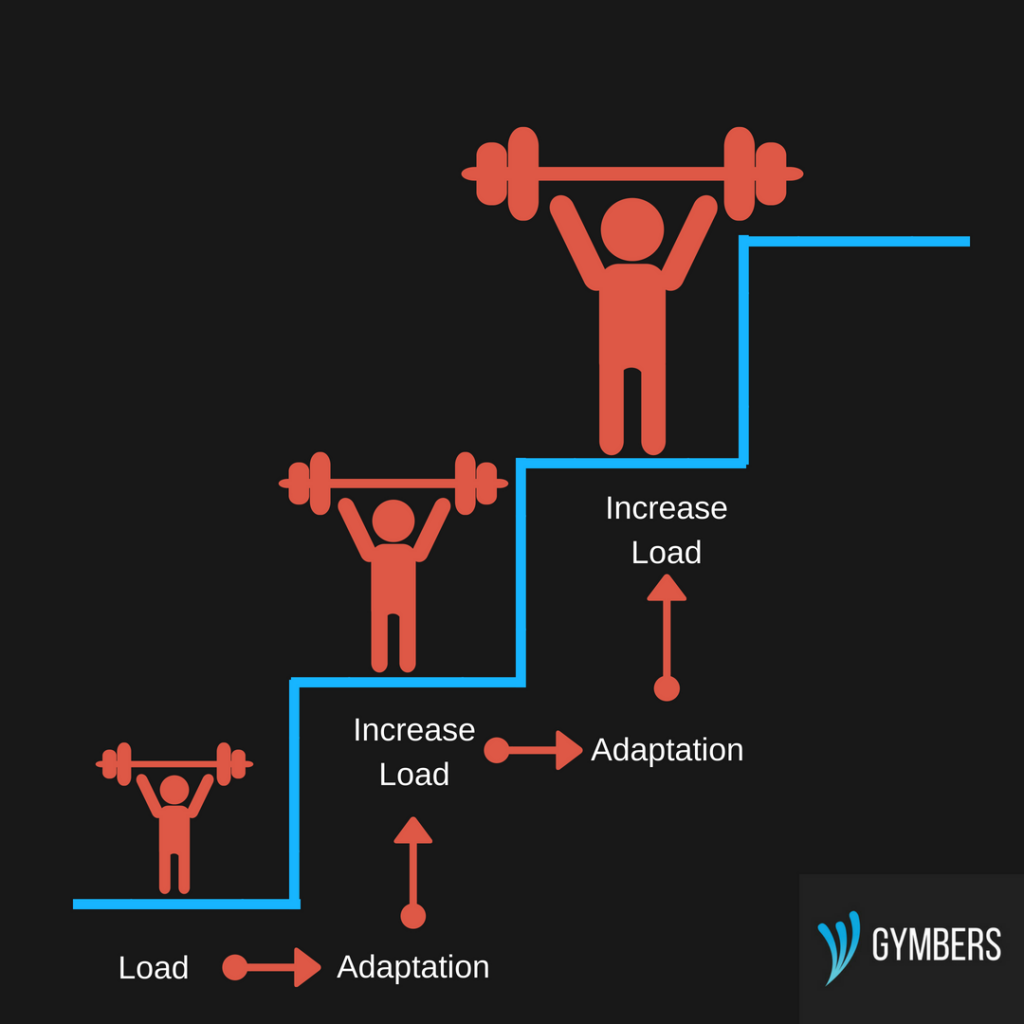In this article, we’re going to teach you about progressive overload – the most important law in strength and muscle building training. You’ve probably come across this term at some point and might even if you’re lifting weights, experienced few principles of this training routine.
A plain translation of this principle is that overload is the gradual increase of stress placed on the body during exercise training.
Now you are thinking: „Why am I here. I’ve been doing this since joining the gym. What’s the point of this progressive overload principle when you will hit the ceiling at a certain point and stop improving.“ and so on.
Now by „gradual increase of stress“ you’re probably thinking of the amount of weight you lift in a certain exercise.
But is that really all you have to know?
NO! Keep reading!
Progressive overload isn’t just about increasing the weight you lift while exercising it’s about making your body adapt to a new environment that you create it in the gym.
How can you actually use the progressive overload principle?
There are various ways that you can overload your body and stimulate your muscles to grow:
-
- Weight increase
-
- Reps increase
-
- Efficiency – which means that you take less rest time between sets and exercises
- Exertion – which means that you slow down the tempo of movement when you perform the exercise
You see? Not only weight increase will stimulate your muscle hypertrophy. Increased reps, less pause between sets, slowing down on the negative part of the exercises can also cause muscle overload and growth.
An Example of Progressive Overload:
If you use 50kg on bench press for 3 sets of 8 reps over and over again your body has no reason to adapt so it’s not gonna grow. But, if you start increasing your weight, reps, sets etc. your body has a reason to grow because you created a new environment for it he isn’t used to and now it has to adopt which means that you will grow new muscle tissue.
But that’s not all…
There are even more ways in which you can achieve progressive overload:
-
- Doing more work in the same amount of time (density)
-
- Doing more sets with the same load and reps (volume)
-
- Lifting the same load and volume more often throughout the week (frequency)
-
- Doing the same work while losing body mass (increased relative volume)
- Lifting the same load and volume and then extending the set past technical failure with forced reps, negatives, drop sets, static holds, rest pause principle etc. (intensity of effort)
How to keep track and overload over time?
So, how can you assure that you overloading from workout to workout, week to week, month to month even a year to a year?!
Very simple, just keep track of your workouts!
And is there a better way to do it then with our WorkoutMemo app?
We’ve developed a mobile app called „WorkoutMemo” which provides a daily timetable and numerous amount of exercises divided into muscle groups you’re interested in. It also provides access to measure and track each and every exercise you do with information about your PRs, statistics, history and even graphs with many variables that you can change and keep track of your overload progress.
But there is something you should consider.
The principle of progression is different for plain beginners compared to more advanced lifters. As a plain beginner ( less than 3 months of experience), you can pretty much do anything and gain muscle as long as you’re consistent (even there we would recommend to track your workouts and make sure you are progressing). It’s also different for men compared to women and for those carrying a lot of muscle versus those not carrying much muscle.
As you getting more advanced and your muscles are getting used to working out, it is absolutely crucial to track your workouts, each and every set, and keep doing your best to overload your muscles from workout to workout!
For beginners, because you progressing enormously in your first few months of working out, don’t try to put each and every workout much more weight on as in your previous workouts as you might get bad muscle soreness or even injure your muscle. You need to take it slow and apply the overload principle gradually and let your body adjusts to the weights.
You will find that on certain exercises you could put sometimes up to 20lbs more than last week, but take it slowly, put maybe just 5-10, that way you can make sure that you are progressing, and extending the period of muscle growth, don’t rush, the time where you are going to put 4 plates on each side will come soon enough!
Look, It’s all about what your goal is. If you are powerlifter you might wanna use increasing weight as your main progressive overload method. If you are an endurance athlete you might wanna increase intensity or decrease rest period between sets and so on.
Let me explain you overload weight training like this

As you can see it all about the adaptation. Now, by the increased load, we don’t mean increased weight. Increased load means increased overload principle of progression from those 4 ways that we mentioned above. Whether it is weight, repetitions, efficiency or exertion your body will take its time to adapt to that and then break that ceiling and provide your muscles with additional hypertrophy.
This is the part where the WorkoutMemo mobile app comes handy and provides you with all the tools needed to help you keep track of your workout progress for every single exercise that you do in the gym. There’s no need for you to bring notebooks and diaries watch the history, compare and maybe after some time lose your track in all that mess you write down. With „WorkoutMemo“, you can follow your routines and track your progress in few simple swipes on your smartphone.
We can’t emphasize this enough:
In order to use overload principle in your workouts, you must learn how to do each of your exercises in the right way. We’re telling you this because as the weight, reps, sets etc. become heavier and harder you might, in order to perform additional reps, use your other muscles and joints and decrease the amount of stress you put in a muscle group that you are focused on. The safety is a key to better hypertrophy and by safety, we mean that you use:
- Proper form for each and every exercise
- Proper weights
- Time to recover your body (rest days, sleep, listening to your body, proper nutrition etc.)
We will cover more about these aspects and other variables that are a vital part of weightlifting progress and progressive overload in general in other articles.
Bottom line?
Progressive overload is something that we at gymbers.com will put most of our effort and research on. This is the best possible method which will provide you with muscle hypertrophy and growth. We will dissect this workout principle into many articles that will round up this whole picture and provide you with answers to every possible question that you might ask us.
You’ve also learned that not only increased weight will make your muscles grow, there are plenty of other ways that you can perform in order to „shock“ your muscles and make them adapt to the new environment that you create for it.
The human body is a perfected machine that will find a way to adapt to almost everything you put in front of it.
You only need to provide your body with time, consistency, hard work and dedication and at the same time listen to what your body what is it saying to you in order to stay on the right path.
Our MAIN goal is to motivate you and provide you with useful information and studies that will help you grow better, larger and faster!
So don’t just sit there and imagine yourself doing 315lbs bench press in the future. Put your muscles to work, give them hell in the gym, love that burn you feel and make your body GROW!
Team GYMBERS.

